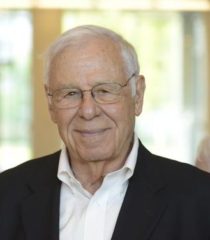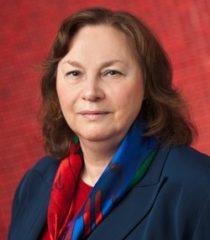SASE’s First 30 Years: 3 Past Presidents Chime In
 Amitai Etzioni – SASE Founder/President 1988-1990
Amitai Etzioni – SASE Founder/President 1988-1990
In 1989, I suggested that neoclassical economics was making empirically erroneous predictions, has a theory of human nature that was indefensible, and that its teaching had deleterious moral consequences. I further argued (in the Moral Dimension: Toward a New Economics) that it’s not enough to criticize the prevailing economic theory but that one needs to develop a better one, which I called “socio-economics”. I founded SASE at the end of a meeting devoted to a discussion of these ideas, at the launch event of The Moral Dimension at the Harvard Business School. Since then a large volume of work by SASE members and behavioral economists has provided much additional evidence about the shortcoming of neoclassical economics. However, much less work has been done on forming a new economic paradigm. I hence repeat here what I consider the starting points for such an endeavor.
- People have divided selves, part pleasure-driven and part morally committed.
- People have limited intellectual capabilities.
They are poor processors of information and are defective decision makers. Actors’ choices of means are largely based on values and emotions. To the extent that they draw on logic and evidence, their limited intellectual capabilities lead the actors to typically render sub-rational decisions.
- The social system.
Individual (I) and collectivity (We) are both essential elements and have the same basic conceptual and moral standing. The I & We is in a perpetual, but in part creative, conflict.
While individuals shape the social entities of which they are members, and these groups and communities shape individuals, each individual on his or her own, is more socially determined than determining.
- Market as sub-system; society as a system
- The scope of the transactions organized by the market is largely determined by the social capsule.
- Competition is not self-sustaining. Its very existence and the scope of transactions organized by it depend to a significant extent on the attributes of the societal capsule within which it takes place; i.e. it is to a significant extent externally determined.
iii. The divergent interests and pursuits of actors in the market do not automatically mesh to form a harmonious whole; i.e. specific mechanisms are needed to keep competition (as contained conflict) from escalating into all-out conflict. Unregulated competition will self-destruct.
- The strength of the capsule is determined by the strength of the moral legitimacy it commands; by the intensity of the social bonds that competitors share; and by the relative power of the government compared with those in the market.
- Social structure.
There are no transactions among equals. Power is the source of structure. (Large corporations often lord over smaller ones; stronger corporations take over weaker ones, despite their opposition. Labor unions are weaker than corporations or industrial associations in some countries and in some industries, and stronger in others and so on.)
The price of an item reflects its costs, and the relative economic and political power of producers (providers, sellers, etc.) as compared to users (buyers, etc.) and other parties (government regulators, consumer unions, farm lobbies, etc.). In short, cost + power = price.
For more discussion see Moral Dimension: Toward a New Economics, Happiness is the Wrong Metric, and The Moral Effects of Economic Teaching.
References:
Etzioni, A. (1990), Moral Dimension: Toward a New Economics. New York: Free Press.
Etzioni, A. (2003), Toward a New Socio-Economic Paradigm. Socio-Economic Review, Vol. 1, No. 1 (2003) 105-118. Available at SSRN: https://ssrn.com/abstract=2157130
Etzioni, Amitai (2018), Happiness is the Wrong Metric: a Liberal Communitarian Response to Populism. New York: Springer.
Etzioni, A. (2015), The Moral Effects of Economic Teaching. Social Forum, 30: 228-233. doi:10.1111/socf.12153
 Nancy DiTomaso – SASE President 1994-1995
Nancy DiTomaso – SASE President 1994-1995
I have participated in SASE since the very first meeting in 1989, and I have missed only one annual meeting since then. I have found at every meeting that I have learned something new, been inspired to think about things in new ways, and have been introduced to scholars in fields with which I would not normally have familiarity from countries far and wide. These factors have contributed to SASE and its mission continuing to grow and change over time. But I have two major concerns for SASE and hopes for its fulfilling the promises that it made at its origins.
First, SASE grew out of a sense that neo-classical economics was taking both the discipline and our countries in the wrong direction. Public choice theory in law, economics, and political science is an alternative framing of neo-classical economics. The influences that these celebrations of the market and the denigration of government and regulation have had on the quality of life for the majority of people over the last several decades have been profound and negative. These have contributed as well to the growing and obscene levels of inequality in many countries. SASE has always been interdisciplinary, but it is now primarily an organization for sociologists, political scientists, and labor relations specialists, while missing the participation of economists, business school faculty, and those in law which it had at the beginning. We need more engagement with the core of neo-classical economics and public choice theory and need to recognize what a threat these ways of thinking are to the things about which we most care. As outlined in Nancy MacLean’s excellent book, Democracy in Chains: The Deep History of the Radical Right’s Stealth Plan for America (NY: Penguin Books, 2017), the goal of neo-classical economics and public choice theory from their origins was to undo democracy and make it impossible for the majority to vote for policies that the very wealthy oppose. These right-wing social movement plans have been wildly successful, much more than any of us could have imagined. Although about the U.S., her analysis is relevant to the global movement of attacking liberal government and social welfare policies.
Second, from the very beginning, SASE members have tended to interpret socio-economics through a lens of class, politics, and the economy narrowly conceived. Although scholarship on gender was added to the array of participation early on and has continued, it has always been exceedingly difficult to develop sustained attention in the annual meeting offerings to scholarship on race, ethnicity, and migration issues, all of which have become critically important to what is happening around the world. The challenges of multiculturalism, of intergroup conflict, and of the right-wing response to migration and the refugee crisis in so many places has shaped everything about our public policy and contributed to continued and growing support for a neo-classical/public choice frame in the major democracies of the world. I continue to hope that SASE incorporates more attention to issues of race, ethnicity, and migration as essential aspects of our understanding of socio-economics and the promise of a moral dimension in theory and practice.
 Colin Crouch – SASE President 2003-2004
Colin Crouch – SASE President 2003-2004
SASE’s first 30 years; and the next 30?
During its early years, a vital role of SASE was as a refuge for younger scholars wanting to work creatively across disciplines, when all the pressures of career development and journal publication were trying to force them into ever narrower specialist paths. As one of those from an older generation who did not have to care about such things, I was impressed by their courage. In later years, although those pressures have intensified, SASE has gone from strength to strength, renewing itself with ever younger cohorts of members. Is it just that the supply of the courageous is growing, or is the wider academic community also beginning to see the importance of SASE’s message?
Given the prominence today of issues of climate change and the misuse of science and technology, the next step in uniting different branches of knowledge must be to bridge the gap between the social and the natural sciences. Is there work here for SASE’s next three decades?